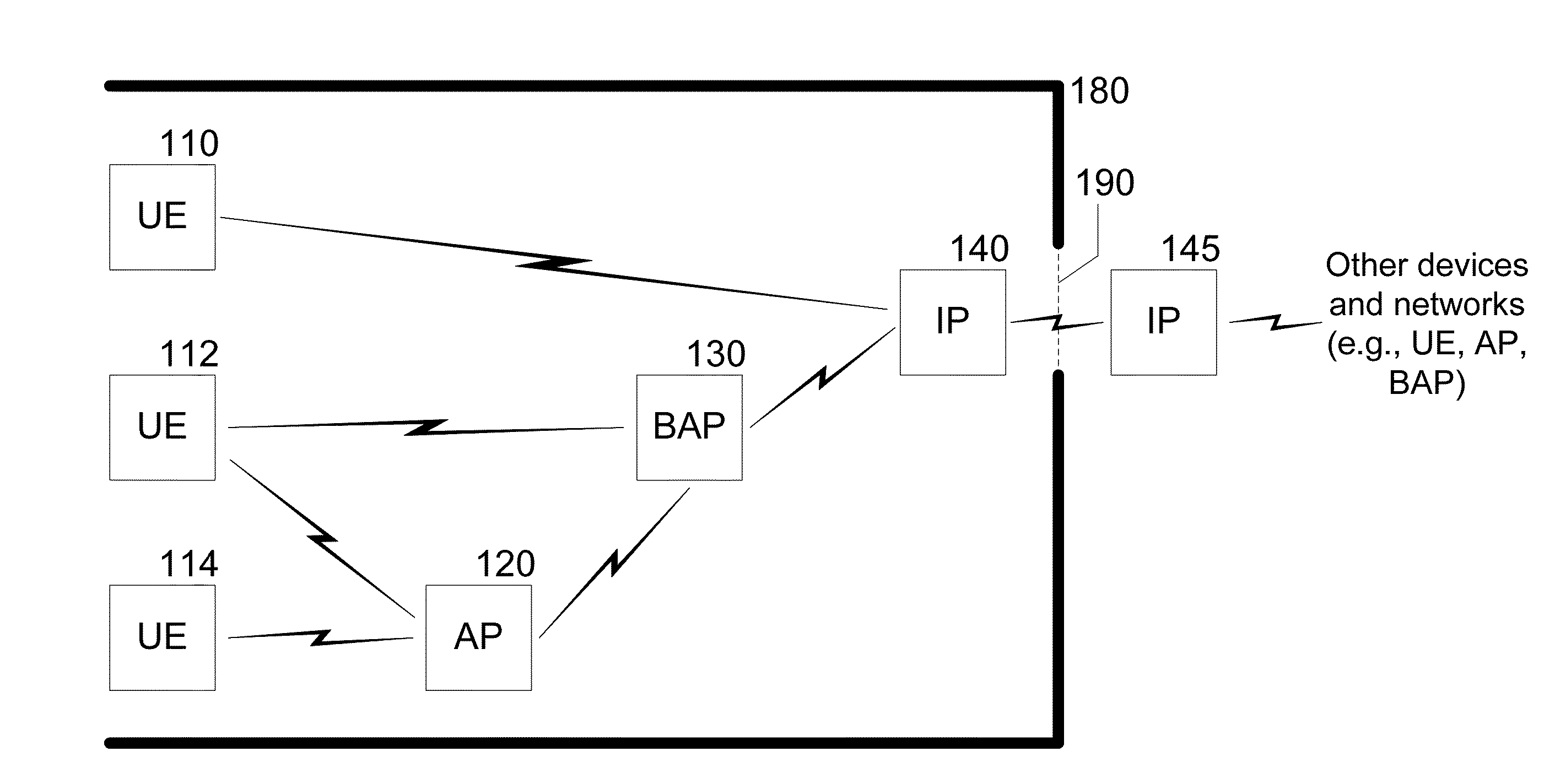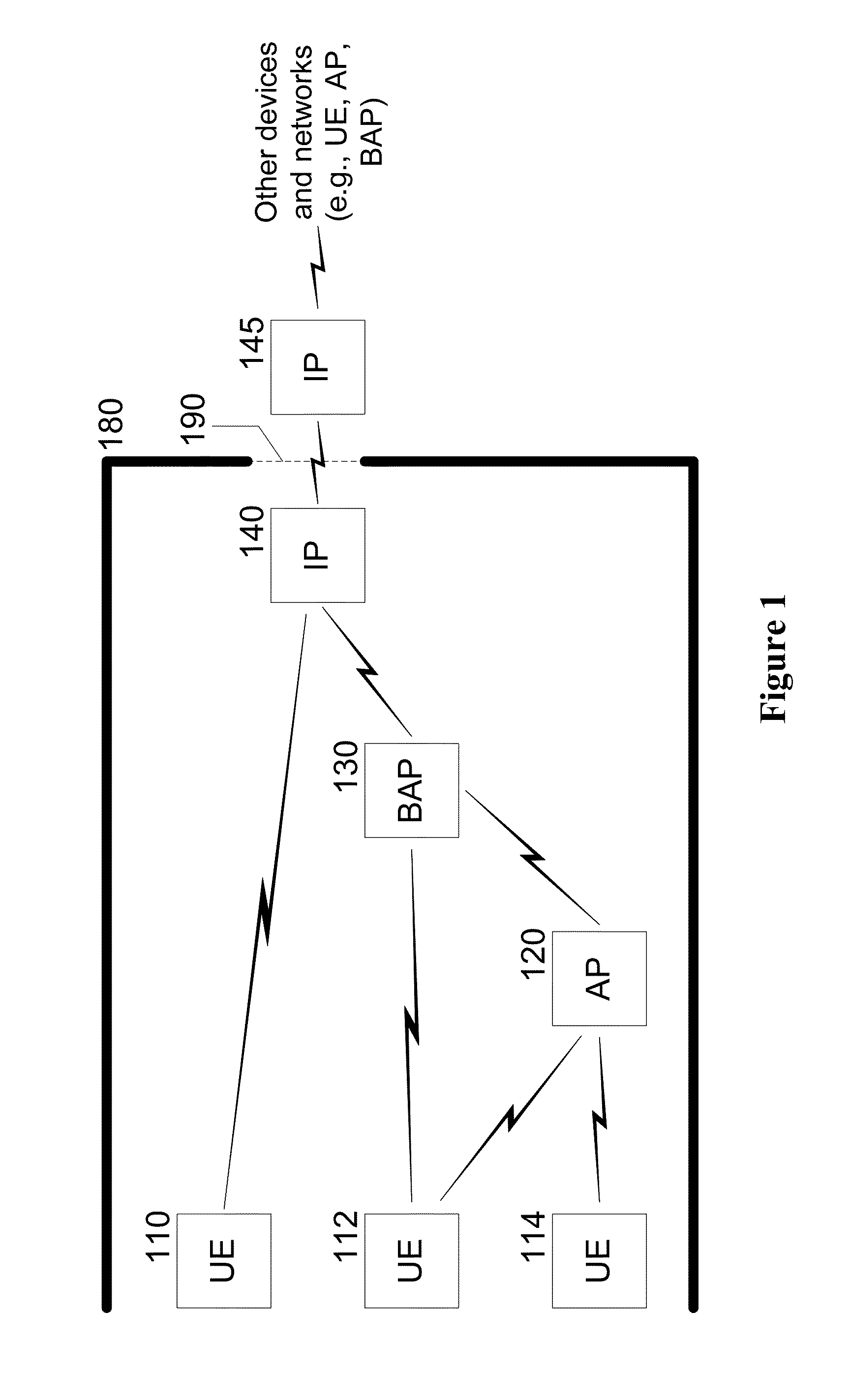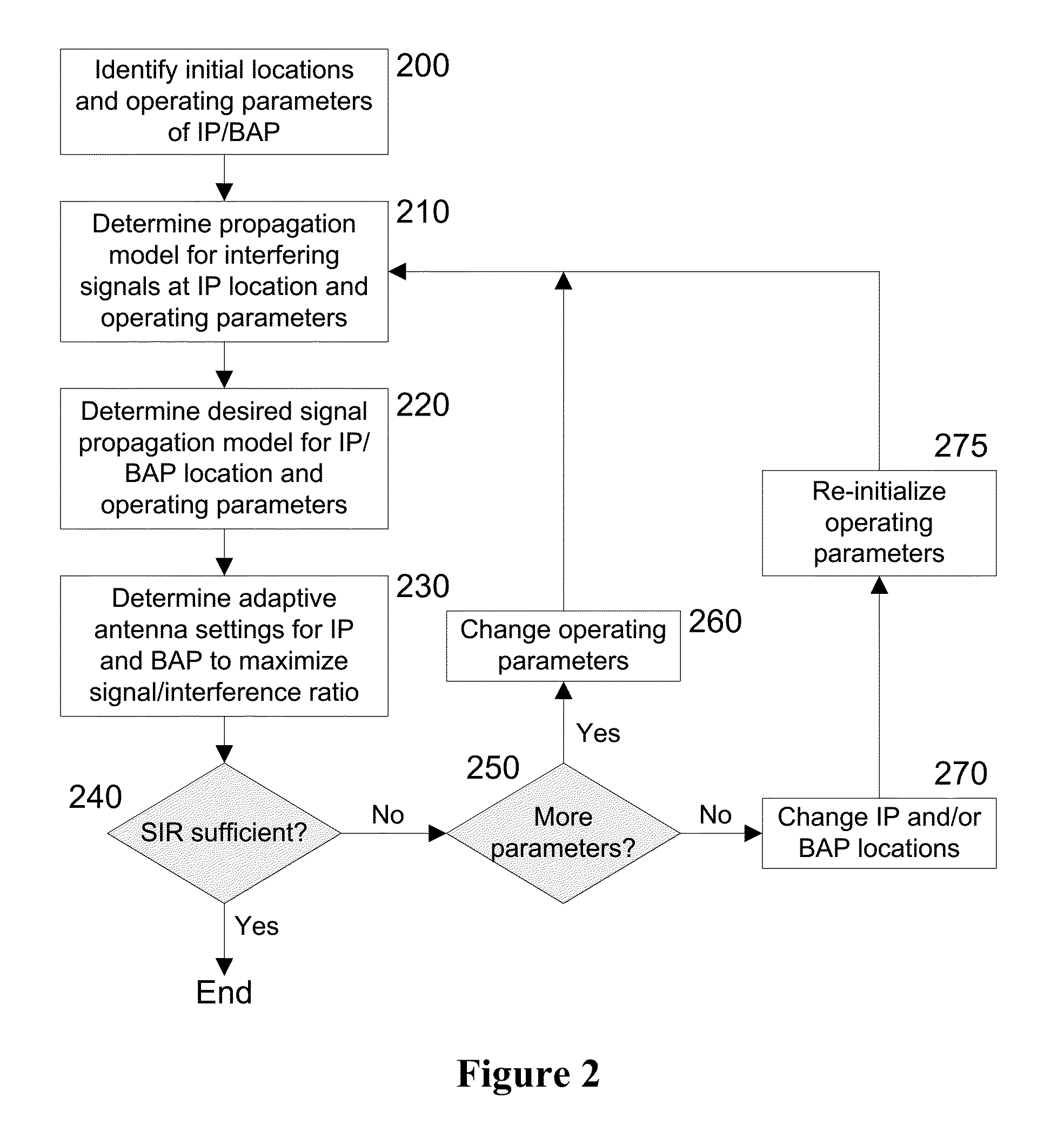System, device, and method for high-frequency millimeter-wave wireless communication using interface points
a high-frequency millimeter-wave wireless and interface point technology, applied in the field of wireless communication systems, can solve the problems of limited efficacy, severe spectrum shortage in the conventional cellular band, and require careful and/or long set-up
- Summary
- Abstract
- Description
- Claims
- Application Information
AI Technical Summary
Benefits of technology
Problems solved by technology
Method used
Image
Examples
Embodiment Construction
[0009]Accordingly, it is possible to provide exemplary embodiments of methods, systems, devices, and computer-readable media of the present disclosure that address at least some of such issues and / or problems, and that out-perform conventional methods, techniques and systems in various known applications, including exemplary applications discussed herein.
[0010]For example, in certain exemplary embodiments of the present disclosure, it is possible to provide a communication system comprising a portal between a plurality of radio-frequency propagation environments that are otherwise relatively isolated (due to the aforementioned attenuation) with respect to a particular range of radio frequencies. In some exemplary embodiments, the portal can comprises a material that is relatively permeable to a predetermined range of radio frequencies (e.g., one or more bands of mmW frequencies) compared to one or more other materials in proximity to the portal. Such an exemplary system can also inc...
PUM
 Login to View More
Login to View More Abstract
Description
Claims
Application Information
 Login to View More
Login to View More - R&D
- Intellectual Property
- Life Sciences
- Materials
- Tech Scout
- Unparalleled Data Quality
- Higher Quality Content
- 60% Fewer Hallucinations
Browse by: Latest US Patents, China's latest patents, Technical Efficacy Thesaurus, Application Domain, Technology Topic, Popular Technical Reports.
© 2025 PatSnap. All rights reserved.Legal|Privacy policy|Modern Slavery Act Transparency Statement|Sitemap|About US| Contact US: help@patsnap.com



